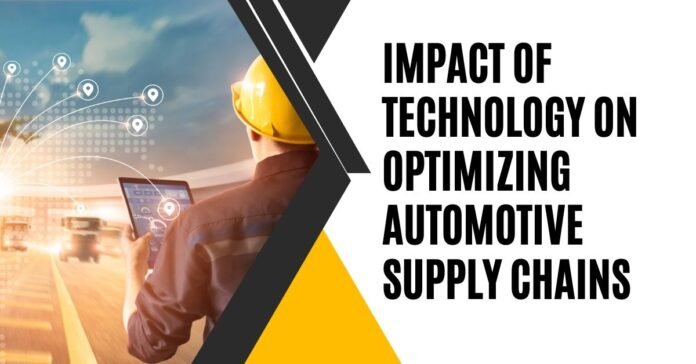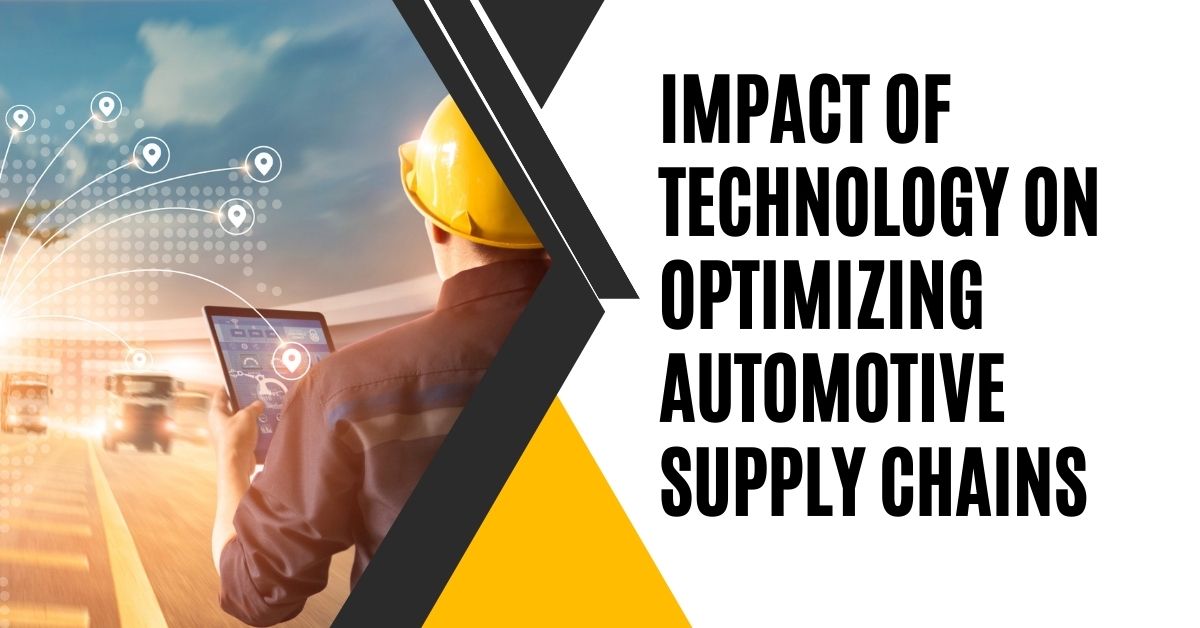In the fast-paced automotive industry, efficiency in the supply chain is crucial to meet the demands of consumers and stay competitive. Technological advancements have played a significant role in streamlining automotive supply chains, revolutionizing the way components and vehicles are manufactured, distributed, and delivered.
Why Does Supply Chain Technology Make Sense?
Supply Chain Management Platforms offer a compelling solution for modern businesses seeking efficiency and competitiveness. By integrating advanced technologies like IoT, AI, and blockchain, these platforms optimize processes, enhance visibility, and streamline operations. They enable real-time tracking, predictive analytics, and seamless collaboration across the supply chain. With Supply Chain Management Platforms, organizations can mitigate risks, reduce costs, and adapt swiftly to market dynamics. Embracing such technology makes perfect sense for driving sustainable growth and staying ahead in today’s dynamic business environment.
Technology Impact on Supply Chain Management
Automation and Robotics
One of the key technologies reshaping automotive supply chains is automation and robotics. Automated systems can streamline production processes, reduce errors, and increase productivity. Robotics are being used in manufacturing plants for tasks such as welding, painting, and assembly, leading to higher precision and consistency in production.
Internet of Things (IoT)
The Internet of Things (IoT) has enabled real-time tracking and monitoring of inventory, parts, and vehicles throughout the supply chain. Connected devices provide valuable data that can be analyzed to optimize routes, predict maintenance needs, and prevent delays in the production process. IoT technology enhances visibility and transparency, allowing manufacturers to make informed decisions quickly.
Big Data and Analytics
Big data analytics have revolutionized supply chain management in the automotive industry. By collecting and analyzing vast amounts of data, companies can identify patterns, trends, and inefficiencies in their supply chains. This insight enables better forecasting, demand planning, and inventory management, ultimately reducing costs and improving efficiency.
How to Streamline Your Automotive Logistics for Maximum Efficiency?
Blockchain Technology
Blockchain technology is also making waves in automotive supply chains by enhancing transparency and security. With blockchain, manufacturers can create secure and immutable records of every transaction, from sourcing raw materials to delivering finished vehicles. This ensures traceability and authenticity throughout the supply chain, reducing the risk of counterfeiting and fraud.
Cloud Computing
Cloud computing has transformed the way automotive companies manage their data and operations. By storing information on cloud-based platforms, organizations can access data from anywhere, collaborate in real-time, and scale their infrastructure according to demand. Cloud computing enhances flexibility and agility in supply chain management.
Artificial Intelligence (AI)
AI technologies, such as machine learning, are being used to optimize supply chain operations in the automotive industry. AI can analyze vast amounts of data to predict demand, optimize inventory levels, and improve routing efficiency. By leveraging AI, companies can make data-driven decisions that lead to cost savings and improved customer satisfaction.
Sustainability Initiatives
Technology is also driving sustainability initiatives in automotive supply chains. By using data analytics and IoT sensors, companies can track environmental impact, reduce waste, and optimize energy consumption. Sustainable practices not only benefit the environment but also improve brand reputation and attract environmentally conscious consumers.
Benefits of Using Technology to Optimize Your Supply Chain
Increased Efficiency
Technological integration streamlines processes and automates tasks, reducing the time and effort required to complete them. This efficiency allows businesses to allocate resources more effectively and focus on strategic initiatives.
Improved Decision Making
Integration of technologies such as data analytics and artificial intelligence provides access to valuable insights from large volumes of data. This empowers decision-makers to make informed choices based on real-time information and predictive analytics.
Enhanced Collaboration
Technologies like cloud computing and collaboration platforms facilitate seamless communication and teamwork among employees, regardless of their location. Integrated systems enable instant sharing of documents, updates, and feedback, fostering a more cohesive and productive work environment.
Enhanced Customer Experience
Integration of customer relationship management (CRM) systems, chatbots, and personalized marketing tools enables businesses to deliver tailored experiences to their customers. By understanding customer preferences and behavior, companies can anticipate needs, resolve issues promptly, and provide proactive support.
Cost Savings
While the initial investment in technological integration may be significant, it often leads to long-term cost savings. Integrated systems streamline operations, reduce manual errors, and minimize duplication of efforts, resulting in lower operational costs and higher profitability over time. Additionally, cloud-based solutions eliminate the need for extensive infrastructure investments and maintenance expenses.
Conclusion
In conclusion, the transformative impact of technology on automotive supply chains cannot be overstated. From automation and IoT to AI and blockchain, these innovations have revolutionized operations, driving efficiency, transparency, and sustainability. By embracing supply chain technology, businesses gain a competitive edge, optimizing processes, enhancing collaboration, and delivering superior customer experiences. The future of automotive supply chains lies in continued integration and advancement of these technologies, paving the way for sustained growth and success in a dynamic industry landscape.


